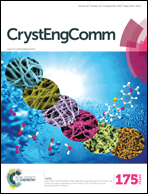Grain boundary engineering in electrospun ZnO nanostructures as promising photocatalysts†
Abstract
Electrospun ZnO nanofibers (ZNF) have received increased attention as photocatalysts owing to their potential for incredible performance. However, uncertainty still exists in determining the correlation between grain boundaries (GBs) and photocatalytic activity. Therefore, effective thought has been put into engineering the GBs to convert ZNF into a promising photocatalyst. Herein, the obtained electrospun ZnO structures are composed of nanograins, which are connected to each other in an ordered manner. In-depth studies have revealed that the growth of nanograins severely altered the morphology of ZNF and GB areas at higher annealing temperatures ranging from 500 °C to 1000 °C. Based on the morphological features and their structural evolution, the obtained structures are named as ZnO nanofibers-1 (ZNF-1, 500 °C), ZnO hollow tubes (ZHT, 600 °C), ZnO nanofibers-2 (ZNF-2, 700 °C), ZnO bamboo structured fibers (ZBF, 800 °C), ZnO segmented fibers (ZSF, 900 °C) and ZnO nanoparticles (ZNP, 1000 °C). A strong correlation between the inherent emission features of ZNF and their peak positions have been detected with the GB. The comparative degradation efficiency of methylene blue (MB) has been studied and the results showed that the ZNF-1 with highly stacked nanograins containing rich grain boundaries demonstrated ∼6 times higher efficiency than other structures. In addition, it has been shown to have a strong effect towards the degradation of Rhodamine B (Rh B) and 4-nitro-phenol (4-NP). A critical parameter for improving the photocatalytic activity is found to be the GB mediated defects, which are proposed to be oxygen/zinc vacancies at nanograin fusion interfaces, while supposedly maintaining its fibrous structure, wherein no relationship has been drawn implying the direct domination of morphology, surface area and defect.


 Please wait while we load your content...
Please wait while we load your content...